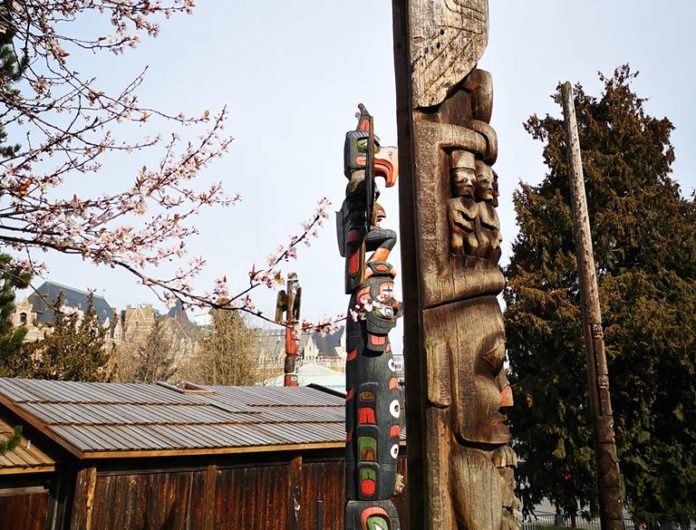This article contains details that may be disturbing to readers.
BC is making international news after the discovery that the remains of 215 children, including some as young as three, were found buried under a former residential school in Kamloops, British Columbia last week.
The Kamloops Indian Residential School was the largest school in the Indian Affairs residential school system that spanned Canada and Vancouver Island.
The Secwépemc Museum Archivist is working with the Royal British Columbia Museum, amongst others, to seek out any existing records of these deaths.
The Royal BC Museum has offered their support to the Tk’emlúps te Secwépemc Nation (Kamloops Indian Band) by searching records held in the BC Archives for historical information related to deaths or burials at the school.
“The most significant, relevant records in the BC Archives are those of the Oblates of Mary Immaculate, the religious order that operated the school,” the Royal BC Museum told Victoria Buzz in a statement.
“The museum is committed to fully supporting the Nation through this archival research. The entire Royal BC Museum community expresses its deep sorrow at the recent discovery of remains of children on the grounds at the former Kamloops Indian Residential School.”
With this recent tragedy, the conversation around Canada’s dark past surrounding residential schools is coming to light.
Residential Schools on Vancouver Island
Residential schools took Metis, Inuit, and First Nations’ children away from the influence of their homes and assimilated them into the dominant Canadain society.
Children were harshly punished for speaking their native language or for other minor so-called violations.
The last residential school in Canada, St Michael’s Residential School in Duck Lake, Saskatchewan, closed in 1996.
On Vancouver Island, there are 5 confirmed residential schools.
St. Michael’s Residential School was an Anglican-run school in Alert Bay near Port McNeill on northeast Vancouver Island; it ran until 1975 and the building was demolished in 2015.
Christie Residential School was the last residential school to close down in BC; it ran from 1900 to 1983 near Tofino.
Ahousaht Residential School was a Presbyterian-run residential school in Flores Island that ran from 1904 to 1925. According to Indian Residential School History and Dialogue Centre (IRSHDC), speaking either Chinook or Siwash was an offence, staff members carried a strap, and children “never learned to work without punishment.” In 1925, it was converted into the United Church.
Alberni Residential School was established by Presbyterian missionaries outside Port Alberni. This school was noted for participation in government malnourishment experiments; it closed in 1973.
Kuper Island Residential School was a Catholic-ran school that opened near Chemainus, Vancouver Island, British Columbia in 1889 and closed in 1975. In 1995, a former employee pled guilty to three charges of indecent assault and gross indecency.
There have been 202 confirmed deaths of First Nations’ children at these schools on the island.
Unfortunately, as seen with the Kamloops tragedy, deaths in residential schools often went unreported and Canada is still seeing the brutal history of residential schools exposed.
Monday night, hundreds took part in a candlelit vigil at the Royal BC Museum in downtown Victoria in honour of the victims’ lives that were lost.
Anyone experiencing trauma due to the effect of Residential schools can call the Indian Residential School Survivors Society Crisis Line at 1-866-925-4419; it’s available 24/7.



